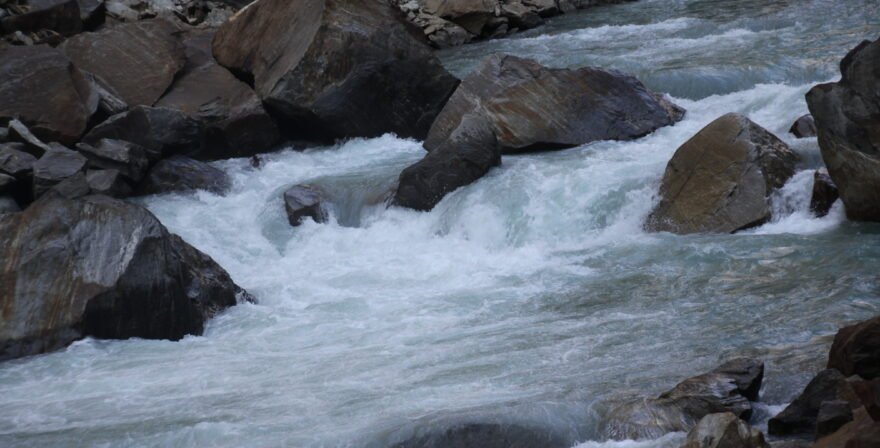
Monsoon Trekking in Nepal

Monsoon trekking in Nepal can be a unique and adventurous experience, though it comes with its own set of challenges and considerations. Here are some key points to keep in mind. Monsoon trekking in Nepal offers a unique experience for adventurous trekkers, despite the challenges posed by the rainy season.
Benefits of Monsoon Trekking
1. Lush Scenery: The monsoon rains bring out the best in Nepal’s landscapes, making the forests and hills vibrant and green.
2. Fewer Crowds: Popular trekking routes are less crowded during the monsoon season, providing a more serene experience.
The monsoon season is when many plants and flowers are in full bloom, adding to the beauty of the trails.
4. Cultural Experience: The monsoon season is also a time of many festivals in Nepal, offering a chance to experience local culture and traditions.
Challenges of Monsoon Trekking
1. Heavy Rainfall: The monsoon season, typically from June to September, sees heavy rainfall which can make trails slippery and difficult to navigate.
2. Leeches and Insects: The damp conditions are perfect for leeches and other insects, so be prepared with appropriate gear and repellents.
3. Landslides and Floods: The risk of landslides and floods increases during the monsoon, especially in mountainous areas.
4. Limited Views: Clouds and fog can obscure mountain views, which might be a downside for those looking for clear vistas of the Himalayas.
Recommended Monsoon Treks
1. Upper Mustang Trek: Located in the rain shadow of the Himalayas, this trek experiences less rainfall and offers stunning desert-like landscapes.
2. Annapurna Circuit (Lower Part): Some parts of the Annapurna Circuit, particularly the lower sections, are more suitable during the monsoon.
3. Everest Base Camp (via Jiri): While the upper regions might be challenging, the lower regions can still be trekked with caution.
4. Langtang Valley Trek: This trek is relatively accessible and can be a good option during the monsoon with proper planning.
Preparation Tips
1. Proper Gear: Invest in waterproof clothing, sturdy trekking boots, and a good-quality rain cover for your backpack.
2. Leech Protection: Use leech socks and carry salt or insect repellent to deal with leeches.
3. Weather Updates: Keep track of weather forecasts and be prepared to alter your plans if necessary.
4. Guide and Porter: Consider hiring a local guide and porter who are familiar with the trails and conditions during the monsoon.
5. Permits and Insurance: Ensure you have the necessary permits and comprehensive travel insurance that covers trekking and emergency evacuations.
Cultural Insights
During the monsoon season, you might have the opportunity to witness various local festivals such as Teej, Gai Jatra, and Janai Purnima. Engaging with these cultural events can add a rich dimension to your trekking experience.
Monsoon trekking in Nepal can be rewarding if you are well-prepared and open to the unique challenges it presents. Enjoy the lush landscapes, fewer crowds, and vibrant cultural experiences while trekking through this beautiful country.
Conclusion

Monsoon trekking in Nepal can be a rewarding experience for those who are well-prepared and open to the challenges and beauty of the rainy season. The combination of fewer crowds, lush landscapes, and cultural encounters makes it a unique time to explore some of Nepal’s most stunning trekking routes.
Typically the majority of the data in website pages and journeying and travel services in Nepal proposes fall and spring seasons are the best chance to travel in Nepal yet Nepal likewise offers probably the best storm journey too that offers extremely tranquil trips without a group. It is generally while the fall season might have the most clear skies, journeying throughout the mid year (from the start June, July and August) has its own prizes. A few journeys ought to be keep away from, yet for specific regions, it has extraordinary opportunity to visit Nepal: the paths are less packed, the towns are brimming with life and the valleys are in blossomed and green though winter and spring is dry and dim.
For any confusions on visiting Nepal, you can email us your queries at Guiderinji@gmail.com or WhatsApp us at +9779841074806.
Fatal error: Uncaught Error: Undefined constant "photo_gallery" in /home/u761844364/domains/greatpanoramatreks.com/public_html/wp-content/themes/greatpanorama/single.php:69 Stack trace: #0 /home/u761844364/domains/greatpanoramatreks.com/public_html/wp-includes/template-loader.php(106): include() #1 /home/u761844364/domains/greatpanoramatreks.com/public_html/wp-blog-header.php(19): require_once('/home/u76184436...') #2 /home/u761844364/domains/greatpanoramatreks.com/public_html/index.php(17): require('/home/u76184436...') #3 {main} thrown in /home/u761844364/domains/greatpanoramatreks.com/public_html/wp-content/themes/greatpanorama/single.php on line 69
